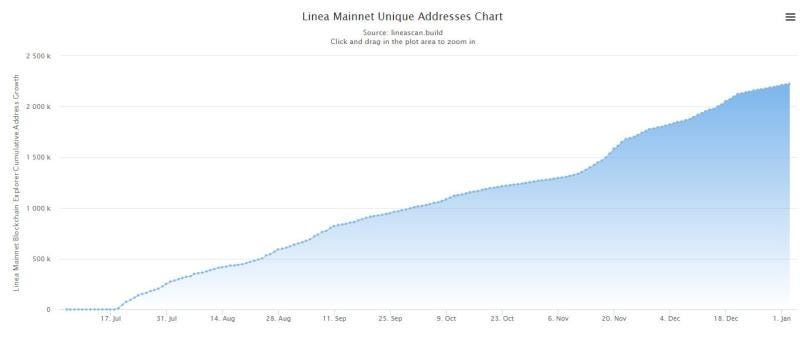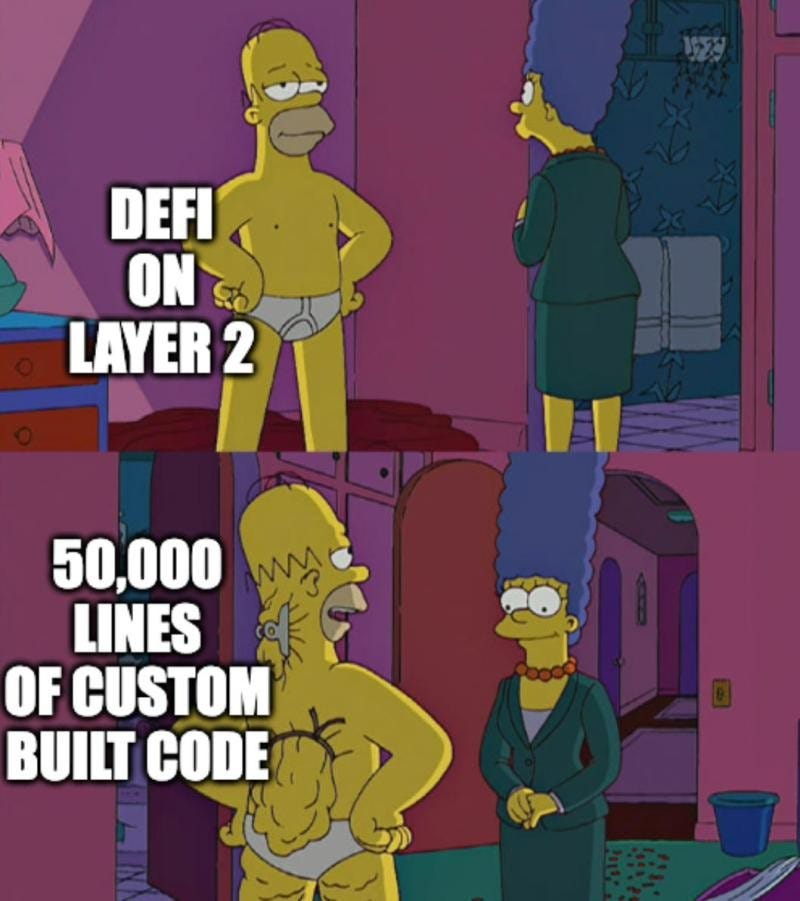Introduction to Linea
In recent months, you may have frequently heard the name Linea. It is actually one of the Layer-2 solutions that we've been hearing about a lot lately. How does this network, backed by web3 giant Consensys and attracting user attention since its mainnet launch in July, operate? What does it promise? Let's take a closer look:
The Ethereum community and its applications continue to evolve and layer-2 solutions are proliferating and pushing in their efforts to scale Ethereum.
What does scaling, in simple terms, mean?
Being able to perform many transactions per second
To be able to do these transactions cheaply
Linea is attempting to achieve both these goals by using ZK-rollup at its core.
Rollups are divided into two: Optimistic Rollups and zk-Rollups. Optimism and Arbitrum are the best-known examples of Optimistic Rollups. On the zk-Rollup side, we have the likes of zkSync, Starknet, and Polygon zkEVM. We can compare these two technologies below👇
At this point, it would probably not be wrong to say that zkRollups are still in technical development and have a higher potential to scale in the long term.
So back to Linea, the zk-Rollup based scaling solution developed by Consensys. How does Linea work and what makes it uniquely different than the other zk-Rollup solutions out there?
The ins and outs of Linea
Linea launched on mainnet during ETHCC Paris 2023. Starting its journey with 100+ dapps on the mainnet gave it strong momentum out of the gate. Looking at the data, we can see it reached around 2 million unique addresses since launch.
.
The Basic Features And Advantages Offered by Linea
Some of the basic features of Linea include low transaction fees, high transaction speeds, and Ethereum Virtual Machine (EVM) equivalence. Here, it’s important to note the EVM equivalence as it allows developers to easily port over their code from Ethereum. Chains not equivalent to EVM mean much more time, energy, and therefore labor. In this respect, Linea significantly differentiates itself from competitors like zksync.
Additionally, by offering outward integrations with popular ConsenSys developer tools like MetaMask, Infura, and Hyperledger Besu, it encourages the adoption and growth of the network. It's also worth mentioning that Linea processes transactions at an average of 1/15th of Ethereum gas fees.
Now let's look at Linea’s basic building blocks: zero-knowledge proofs, rollups, and Linea Canonical Message Service.
Linea's Innovative Technologies
Linea uses a series of ground-breaking technologies to improve throughput, privacy, security, speed and scalability around Ethereum. These technologies significantly improve transaction privacy, security, speed, and scalability. Here are the three main technologies featured in Linea:
Zero-Knowledge Proofs (ZKPs)
Linea uses zero-knowledge proofs (ZKPs) to maintain transaction integrity while keeping transaction details confidential. This technology allows the correctness of a transaction to be proven without revealing its details. ZKP occurs between two parties; the transaction sender (prover) and the receiver (verifier). The transaction details, referred to as the "witness," are kept confidential.
The prover responds to a challenge created by the verifier to prove the correctness of a transaction. The prover's response to this challenge verifies their knowledge about the witness. The protocol validates the prover's response and conveys the transaction's correctness to the verifier. Thus, the receiver of the transaction only knows whether the transaction is correct or incorrect.
Rollups
Rollups increase the Ethereum network's transaction capacity by processing multiple transactions collectively. This system reduces transaction fees by validating many transactions as a single transaction while simultaneously verifying all transactions. Rollups can package more than 60,000 transactions at a time and confirm a group of transactions in 13 seconds, which translates to more than 4,800 transactions per second. In comparison, the Ethereum mainnet can only process 32 transactions per second.
Linea Canonical Message Service
Linea's Canonical Message Service creates an efficient communication pathway between the Linea network and the Ethereum mainnet. This service functions as a bridge and messaging stack. This system, consisting of a combination of protocols and smart contracts, transmits routine transaction information and arbitrary messages between Linea and other networks. The main messaging protocol of Linea is 'Postbots.'
The project indicates that during the test phase, Postbots are 'actors' that 'listen' to calls made to contracts on Linea or Ethereum and transmit information to the other network. While centralized in the test phase, ConsenSys claims that the Postbot protocol will be a decentralized protocol where everyone on the network can serve as a Postbot when fully operational.
In summary, these technologies imply that Linea conceals transactions using zero-knowledge, packages them with rollup technology, and then transmits these transactions to the main network via the Canonical Message Service.
Directly Copy What You Do on Ethereum to Linea: EVM Equivalence
We can say that Ethereum, after Bitcoin, holds the most value in terms of assets and perhaps more importantly, hosts countless dapps and developers. Compared to other ecosystems, this is a unique feature of Ethereum and naturally, this provides important advantages to dapp and ecosystem development. Developers who constantly work on different parts of the network are constantly trying to improve SDKs, tooling, and infrastructure. At this point, a fundamental problem arises between chains that use and try to scale Ethereum: their relationship with EVM. Two important distinctions regarding EVM are:
EVM Compatibility and EVM Equivalence.
EVM Equivalence means that developers can directly transfer codes on EVM to that network. In other words, copy and paste. This means directly porting the know-how there. Imagine how valuable this know-how is considering the countless mistakes, hacks, and various tried and abandoned solutions that have gone to where we are today. On the other hand, EVM Compatibility means that the codes on EVM can be used by revising them according to the language of that network and establishing communication between them. Revising codes means that developers really need to spend a lot of time.
Let's Talk About Security
The technology used for State Validation is ZK Proof and zkSNARKs. This system ensures state correctness, but it requires a trusted setup beforehand. You may remember the trusted setup from the KZG Ceremony. Essentially, a polynomial is obtained by adding random inputs from users one after the other. This polynomial cannot be found if all the inputs in the setup are unknown, and thus, as this polynomial is always used to verify proofs as a gateway, it ensures correctness.
Upgradeability is also allowed in Linea, which means that a sudden change can be made in the network, and this can cause potential issues for users. There is also no escape window for users against unwanted upgradeability. If there is a problem related to the Sequencer, such as censorship or the Sequencer being out of operation, there is no solution mechanism.
Similar problems are present in many Layer-2s and remain an important criticism.
What Is Linea Doing About the Community?
Since the testnet phase, Linea has organized various events to advance community growth and encourage the development of test applications. The most comprehensive of these events is "The Linea Voyage". This system, which distributes Linea Voyage xp to users, subjects many users to various tasks to actively use the chain. For example, "go to IZUMI Finance and make a swap of $10 or more" Although this system has attracted the attention of airdrop hunters, there are also users who criticize it.
If you are curious about the statistics of Linea, which managed the event through the Interact platform, you can check
Wrapping Up
Linea, with Consensus behind it, continues to take important steps. Like many other zk-Rollup protocols, certain technical problems still need to be solved. However, since its launch, the project continues to attract a healthy number of user attention with an increase in both its activity in the community and the volume it brings to the network. In the future, we can expect to see many more dapps deploying to Linea. As of now, in 2024, the view of the top 10 most active Dapps on the network looks like this, according to DeFiLIama data.
If you want to learn more about Linea or follow the regular Linea ecosystem, it would be beneficial to check out our Linea Dashboard ;)









